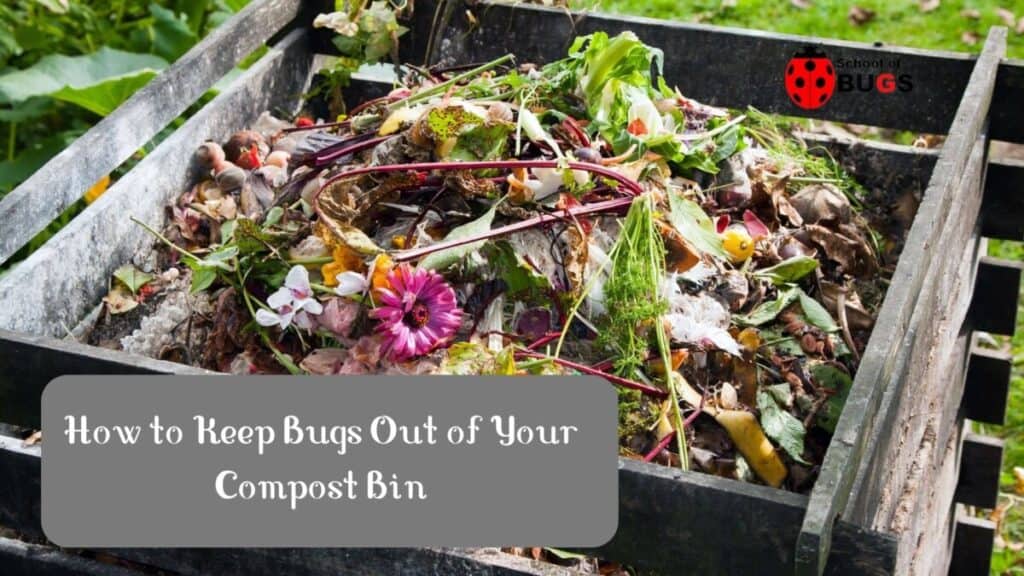
Composting your kitchen scraps is a great way to create a homemade, affordable, and nutrient-rich fertilizer for your garden!
However, if you have started a compost bin or even ever left scraps around, you have probably noticed that bugs love it which can be fairly annoying and a bit gross. So let’s find out how to keep bugs out of your compost bin.
The best way to keep bugs out of your compost bin is to manage moisture by adding layers of dry leaves, aerating the compost, and ensuring you never add animal waste or products to your compost.
If you want to learn a little more about the ins and outs of creating a bug-free compost bin, keep reading! In this article, we are going to go through everything you need to know including the following topics:
- What type of vessel makes the best compost bin.
- Natural materials that can and should go in the compost.
- Materials that should never be put in your compost bin.
- How to keep your compost bin free of bugs.
- Are bugs bad for compost?
Let’s dig in!
What Type of Vessel Makes the Best Compost Bin?
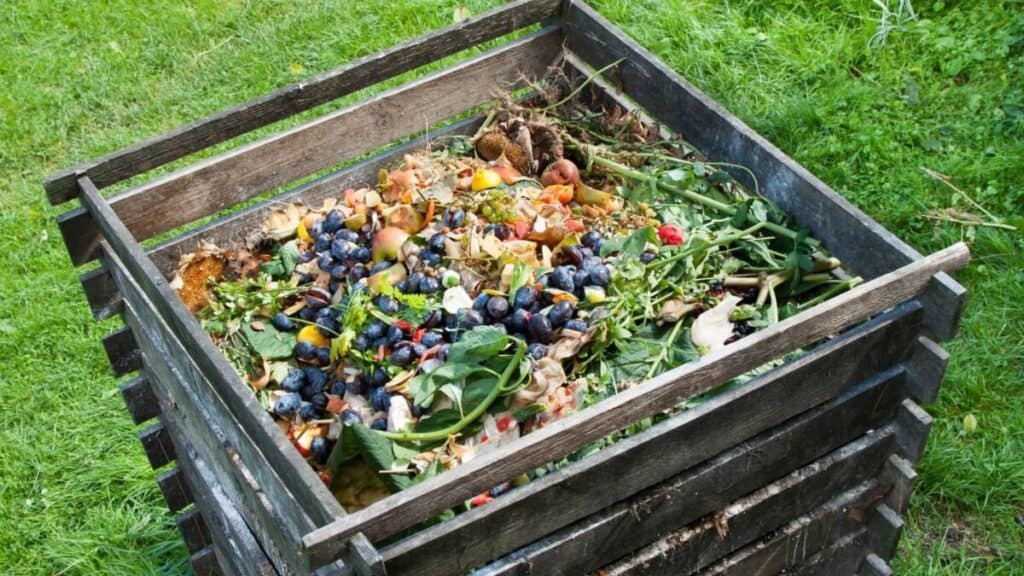
Before we discuss exactly what should and should not be put inside your compost bin, it’s extremely important that you choose the right bucket, bin, vessel, whatever you want to call it, for your compost.
Choosing the wrong type of compost bin can increase your risk of finding bugs and other pests, and can even stop your compost from decomposing in the right way to create a healthy fertilizer.
If you go to a local garden store, they will most likely have plastic or metal compost bins for sale. You can also use a large garbage can or any other type of plastic bucket.
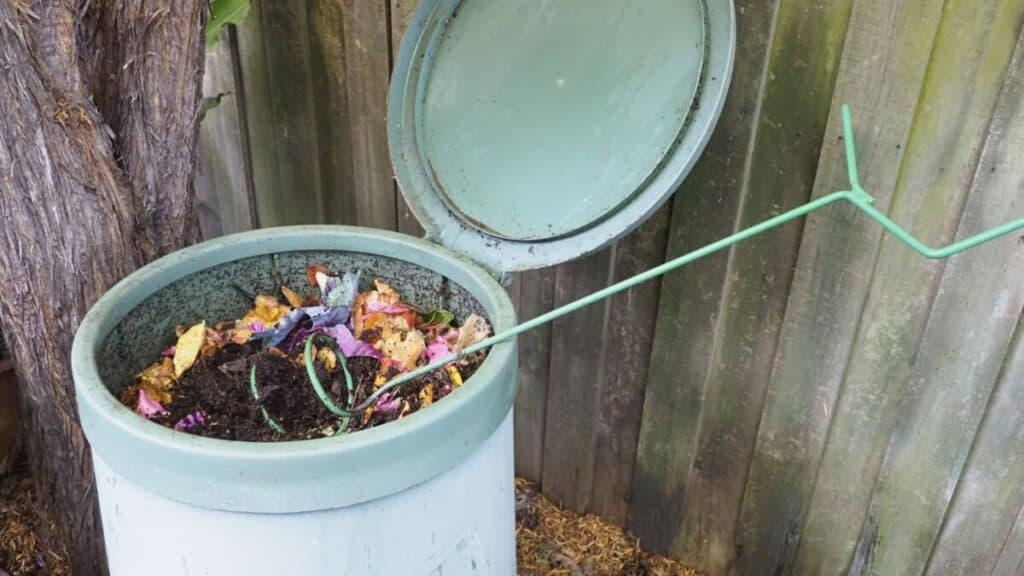
However, although plastic and metal will technically work as compost bins, they are not the best options.
Here’s why: the best compost can easily release moisture and breath properly, and plastic or metal simply does not provide this option.
The very best way to compost your kitchen scraps is in an open wooden box. Although wooden compost bins are not commonly sold at garden centers, they are extremely easy to make yourself!
Even if you’re not a carpenter, as long as you have wood, a saw, a hammer, and nails, you can make your own wildly successful compost bin!
The great news is it doesn’t even need to be pretty as it will most likely be hidden in the corner of your garden and will only house your kitchen scraps.
If you’d like to learn how to make your own wooden compost bin, you should check out this helpful site.
Natural Materials That Should Go In Your Compost
Now that you know what kind of compost bin you need, remember that plastic will work but wood is better, let’s find out what kinds of natural materials are great for your compost.

There are essentially two categories of what can and should go in your compost bin: green and brown materials.
- Green materials: fruit and vegetable scraps, tea, coffee grounds, crushed eggshells, grass clippings, green plant cuttings, old flowers, and weeds from your garden.
- Brown materials: straw, paper and cardboard, dry leaves, woody prunings, and sawdust.
The combination of both types of natural materials will create the best possible compost and therefore best fertilizer for your garden.
As we will learn in the following sections, creating well-balanced compost will also help keep away unwanted bugs and animals.
Materials That Should Never Go In Your Compost
There are a few things that you may think are good for your compost because they are natural materials but should never go in your compost bin.
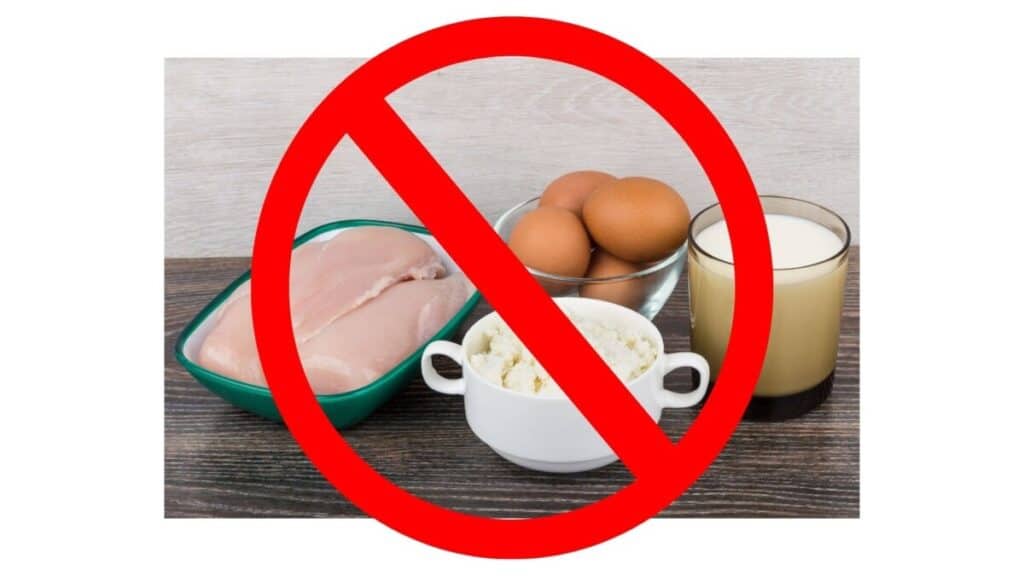
Any animal meat or by-products should never go near your compost. This includes meat, animal bones, dairy products, or animal droppings.
You should also avoid adding diseased plants, oils and greasy foods, butter, treated sawdust, baked goods, or any processed foods.
Now that you know what should and should not go into your compost bin it’s time to learn how to keep out bugs!
How to Keep Bugs Out of Your Compost Bin
Even if you use the recommended slatted wooden compost bin and only put in the natural materials recommended above, you may still find that there are bugs in your compost bin.
Luckily, there are a few simple ways to get rid of those pesky insects! Here’s what you need to do:
- Layer your compost bin.
- Manage the moisture.
- Aerate your compost regularly.
Now it’s time to dig a little deeper into these tactics so you can have all the information you need to keep your compost bug free!
Layer Your Compost Bin
When starting your compost bin, the very first layer either in the plastic or on the ground must be made of twigs, dried leaves, mulch, old potting mix, or better yet, a combination of them all.
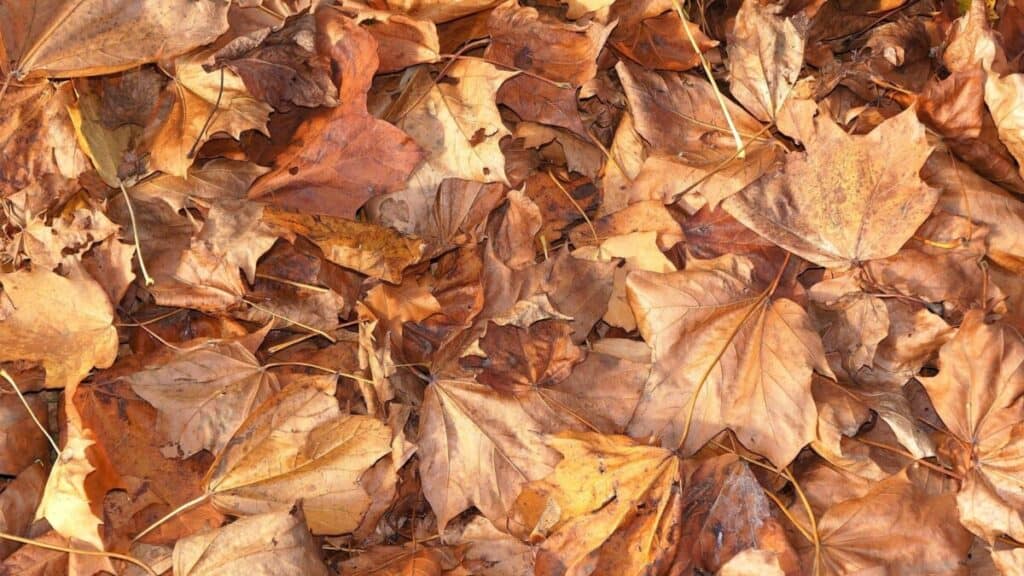
The next layer should be green materials such as kitchen and garden scraps, then a brown material layer that includes paper and leaves. When layering, try to add two parts of brown material to one part of the green.
After that, add a layer of water. Remember that you do not want your compost to be too wet and a lot of water goes a long way.
If you are using a plastic bin as your compost, you may want to skip this step as the water can pool at the bottom as it has nowhere to escape.

A few things to remember when it comes to successful layering: the smaller the bits of material are, the quicker they will decompose, and the same goes for the layers, the thinner they are, the more efficient your compost bin will be!
By increasing your compost’s productivity with these tactics, you are far less likely to see bugs in and around your compost!
Manage the Moisture
Getting the moisture just right in your compost will help your scraps decompose properly and, of course, keep the annoying bugs at bay!
As a general rule of thumb, your compost should be damp but not wet. As you know, adding some water can be a good thing if you have a lot of dry materials.
However, if you are adding a lot of wet materials, it may be best to skip the water layer.
Your compost should have the consistency and moisture of a sponge after you’ve squeezed it!
Aerate Your Compost Regularly
Your compost needs air to properly breathe and compost. Because you now know that successful composting will deter bugs, it should be clear that adding air to your compost will help the fight against insects!
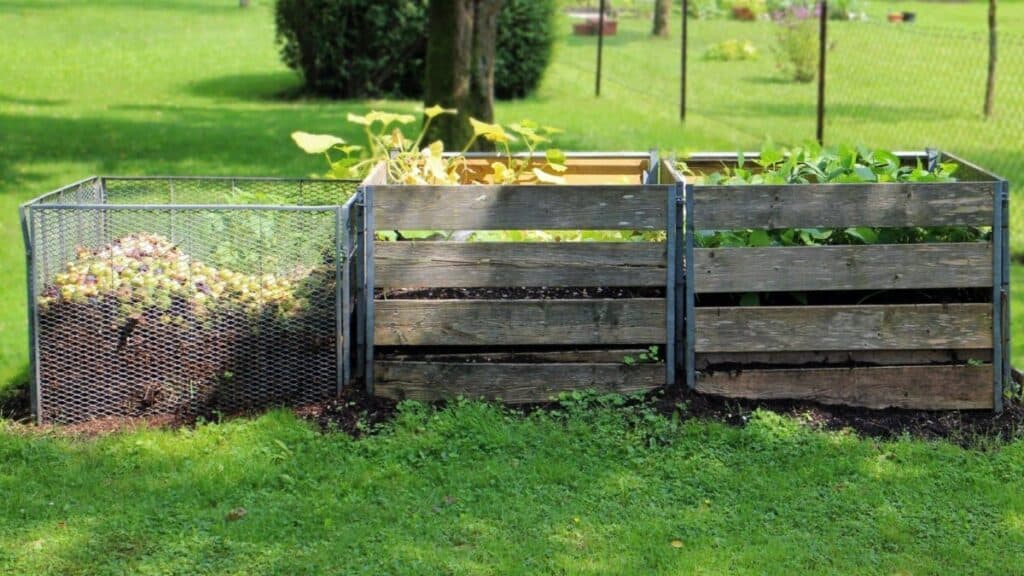
You can aerate your compost in two ways, by placing hollow plastic tubing directly in the compost, or by moving it around yourself with a shovel or rake.
Plastic tubing is the best option for large compost bins without a lid. They should be placed vertically in the compost and buried deeply so air can escape from the bottom.
Most people opt for moving compost around with a shovel or rake. This tactic should be used every few days and it’s important that you get down to the bottom of the bin when you do so.
Aerating your compost will help in every way, it will keep a good moisture level throughout, help the material compost quickly, and make sure bugs stay far away!
Are Bugs Bad for Compost?
While we have dedicated this entire article to find out how to keep bugs out of your compost, you may be wondering: are bugs even bad for compost?
Realistically, bugs are not actually bad for your compost. In fact, some species really help the decomposition process!
When composting, if you see small bugs in the actual pile of compost, it’s best not to pick them out because they are probably doing an important job!
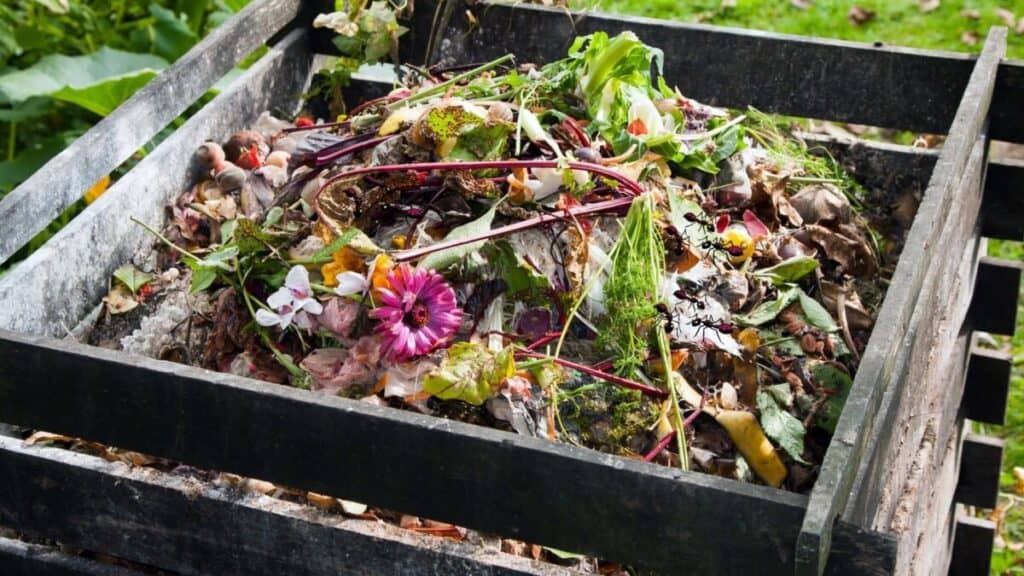
However, if you have swarms of flies, mosquitos, and other annoying insects flying around your compost bin all the time, not only is it really annoying, but they aren’t doing anything for your compost.
Having too many bugs around your compost can lead to you often ignoring your compost, the bugs can move over to your plants, and they can even bring diseases into your home.
The tactics we listed above will not stop the beneficial bugs from doing their work, they will simply ensure that excess bugs are not having a field day living around your compost bin.
The Bottom Line
When it comes to keeping bugs out of your compost bin, there are several solutions you can actively do daily.
In case you’ve already forgotten, here are the six essential tactics you should take to keep bugs out of your compost: choose the right bin, put in the right natural materials, avoid unwanted materials, layer your compost bin, keep the moisture content just right, and aerate the bin consistently.
As promised, you now have all the information you need to create a successful compost bin that is (mostly) bug-free!
Alright, that’s it for this article, here are a few hand-selected articles that you might also find interesting reads:
How to Get Rid of Pill Bugs in CompostHow To Keep Bugs Out Your Tent – 7 Proven Strategies
How to Get Rid of Wood Bugs Naturally
Recent Posts
Tiny Black Bugs in Bathroom NO WINGS: What They Are and What to Do!
Finding tiny black bugs in your bathroom can be uncomfortable, to say the least. Especially if they are persistent, or they appear in very large numbers, which they often like to do. When it...
Tiny Black Bugs in Plant Soil - What Are They & What To Do About It
A short horror story: You get a new houseplant. You do your best to take care of it. You’ve ensured that it has the right soil, the right amount of sun, it gets enough water. And then one day, you...

